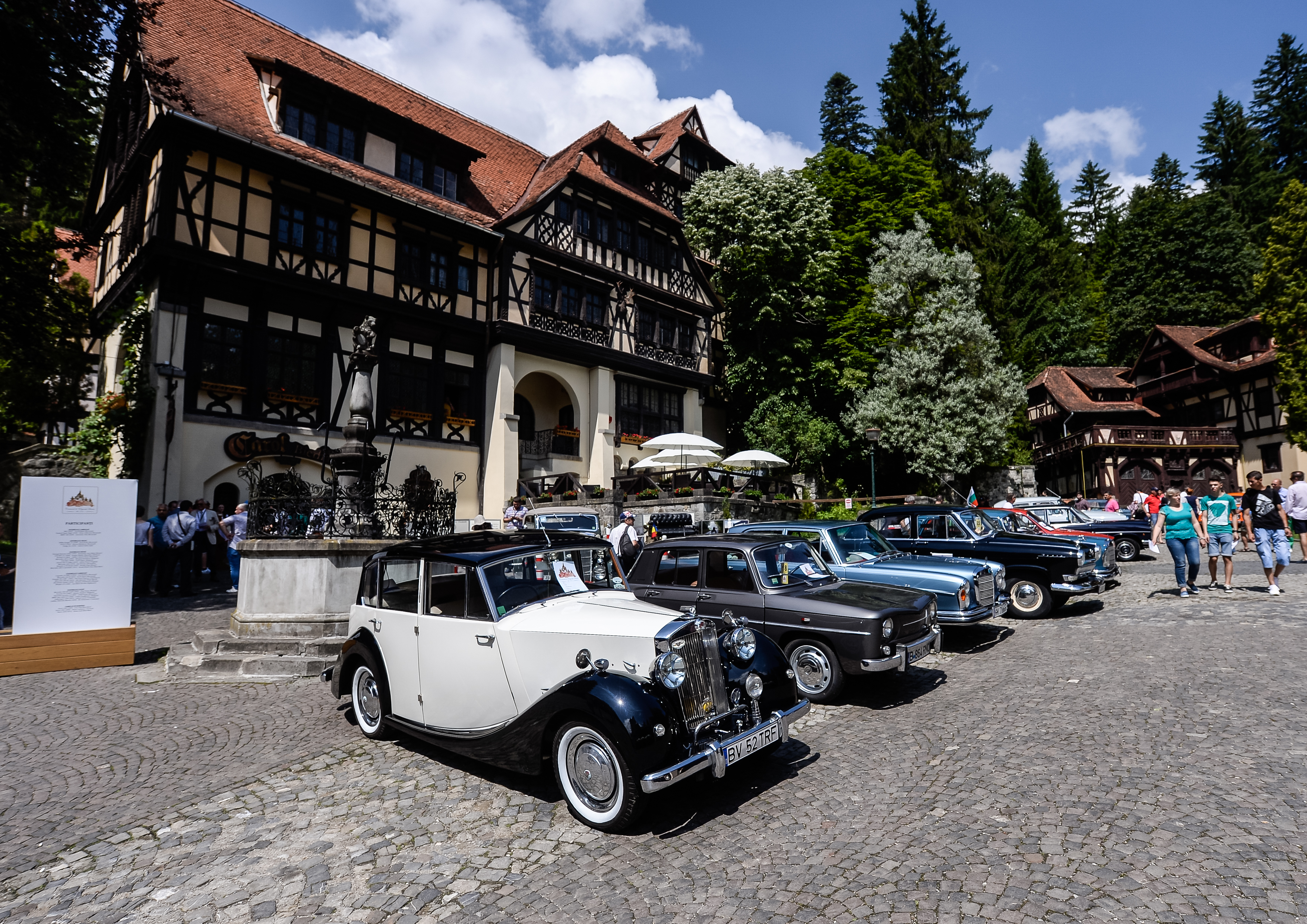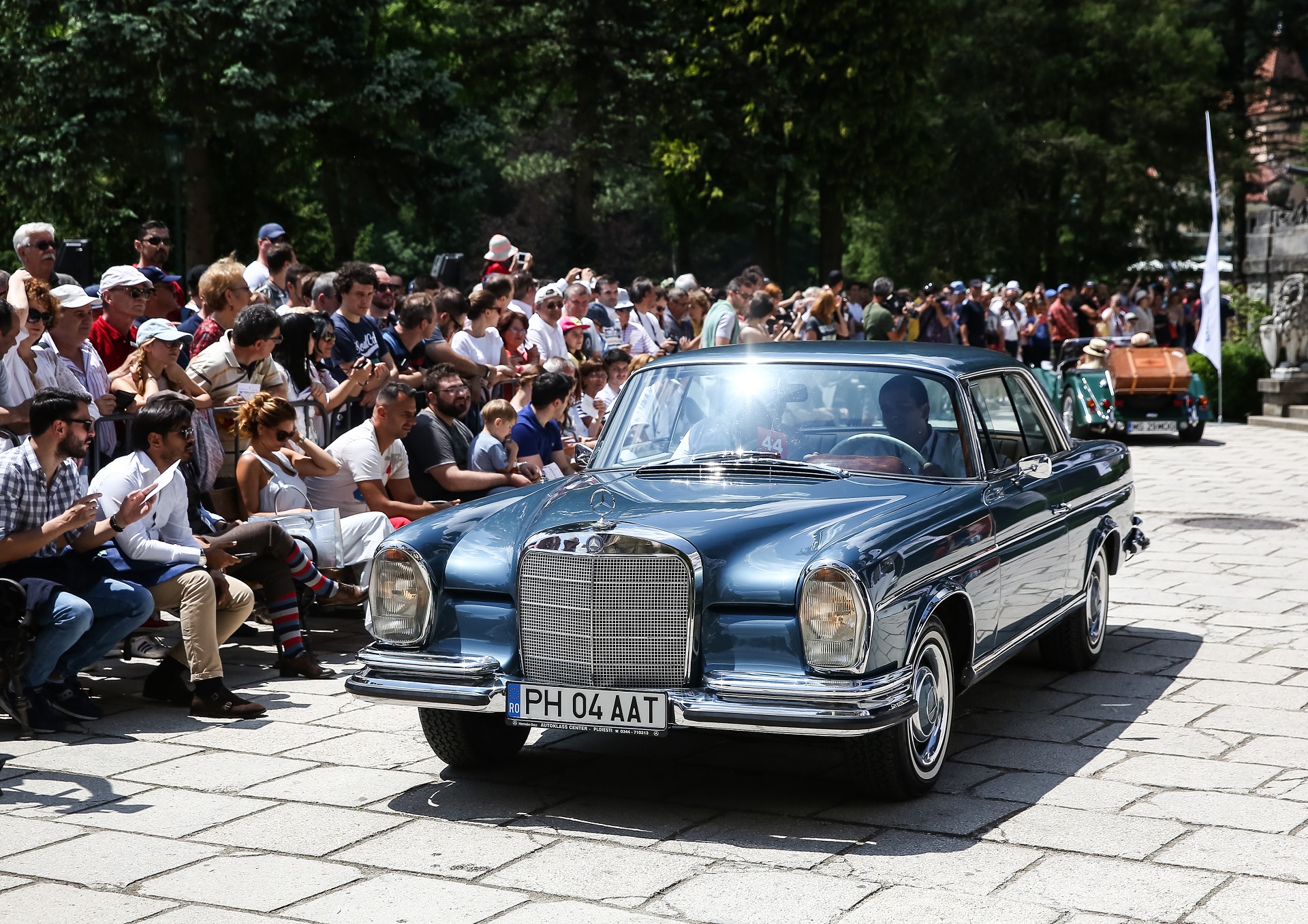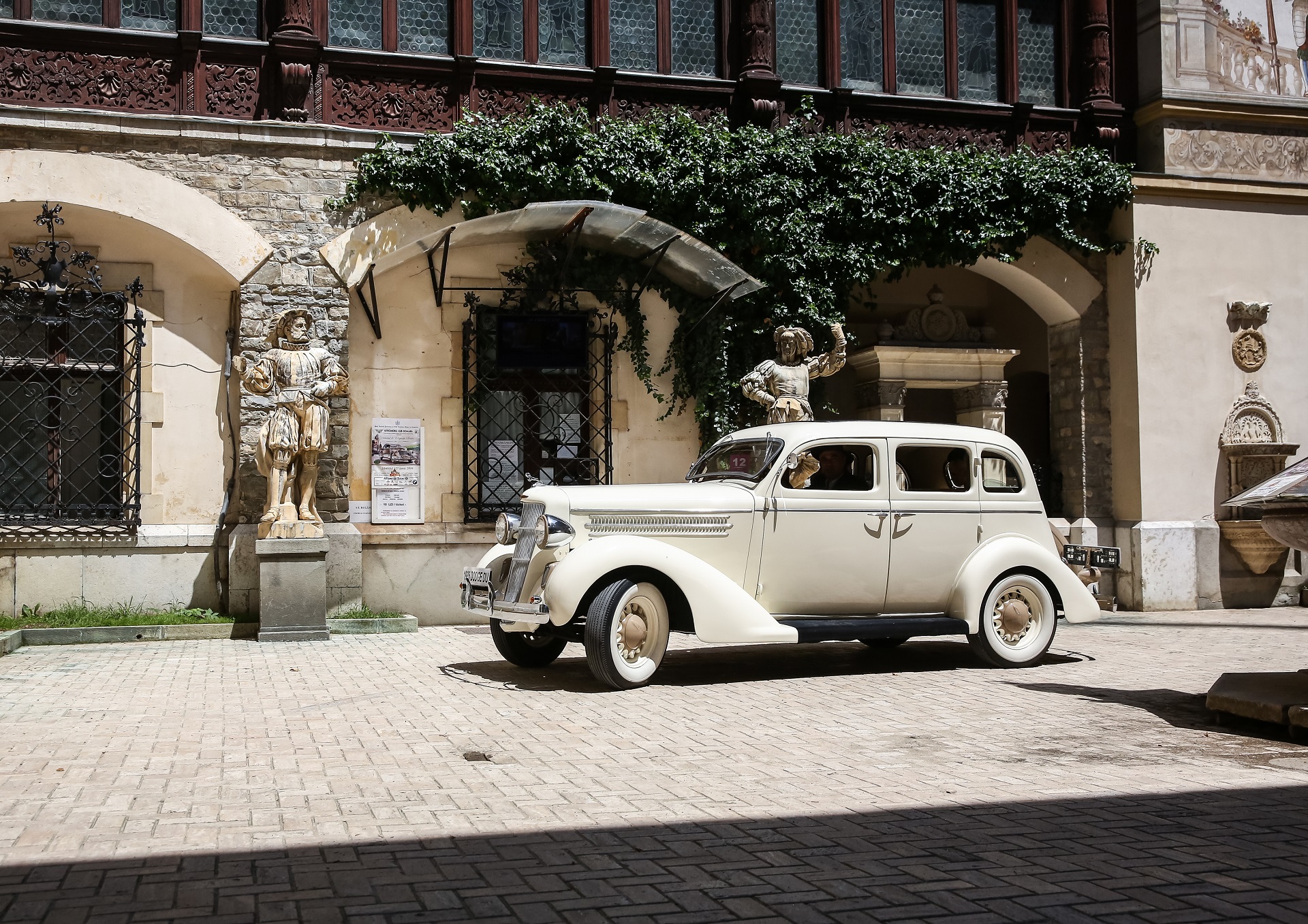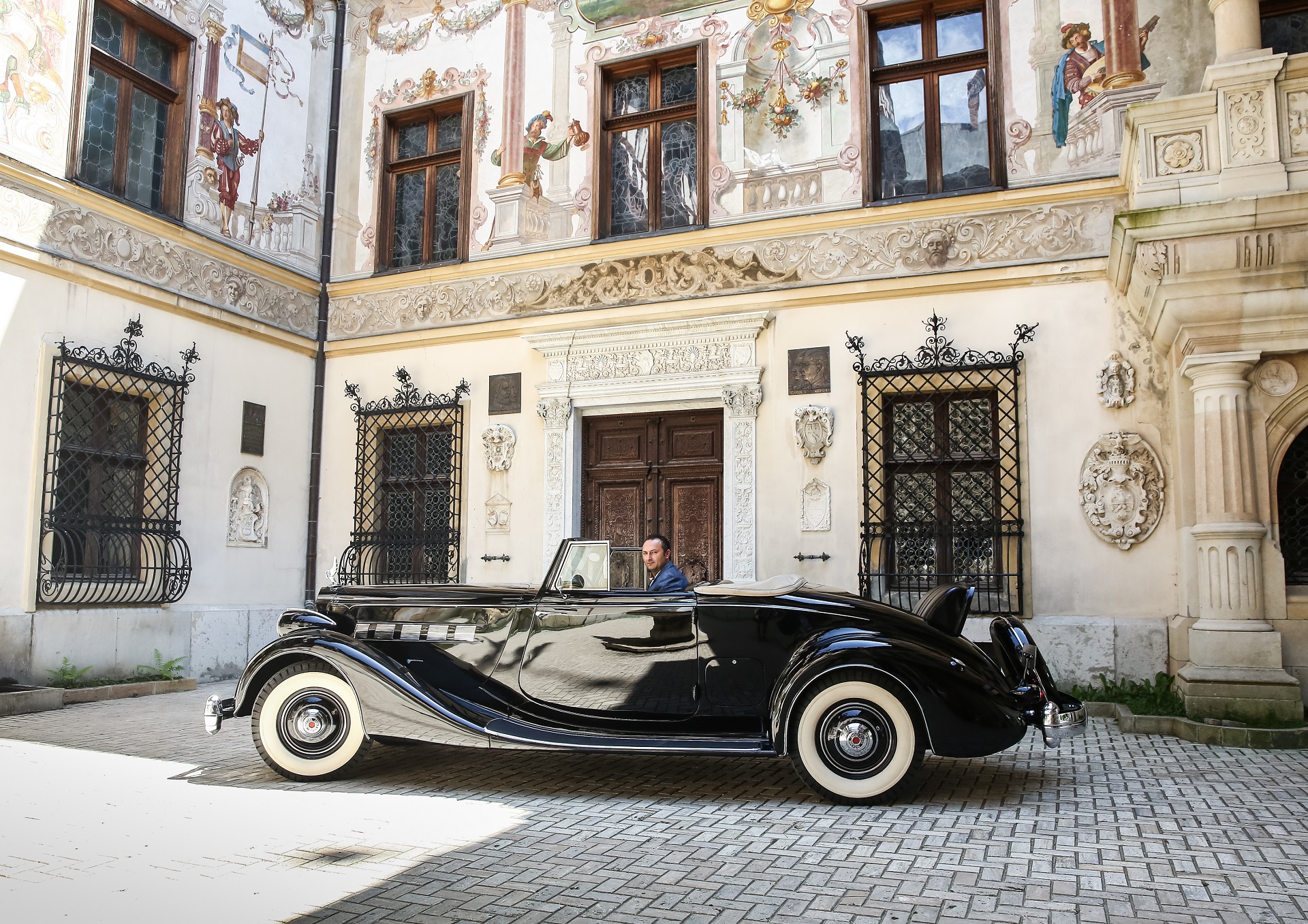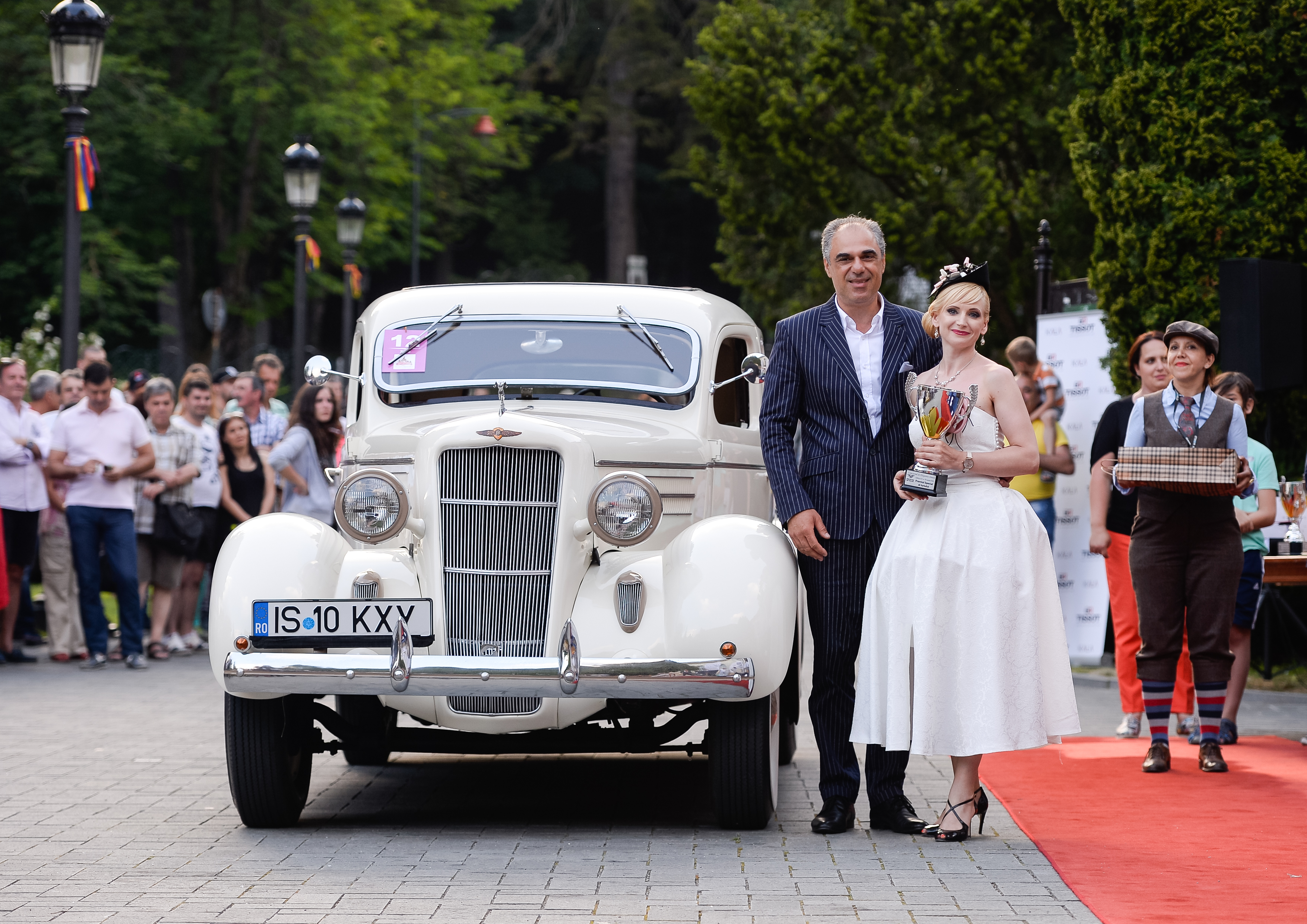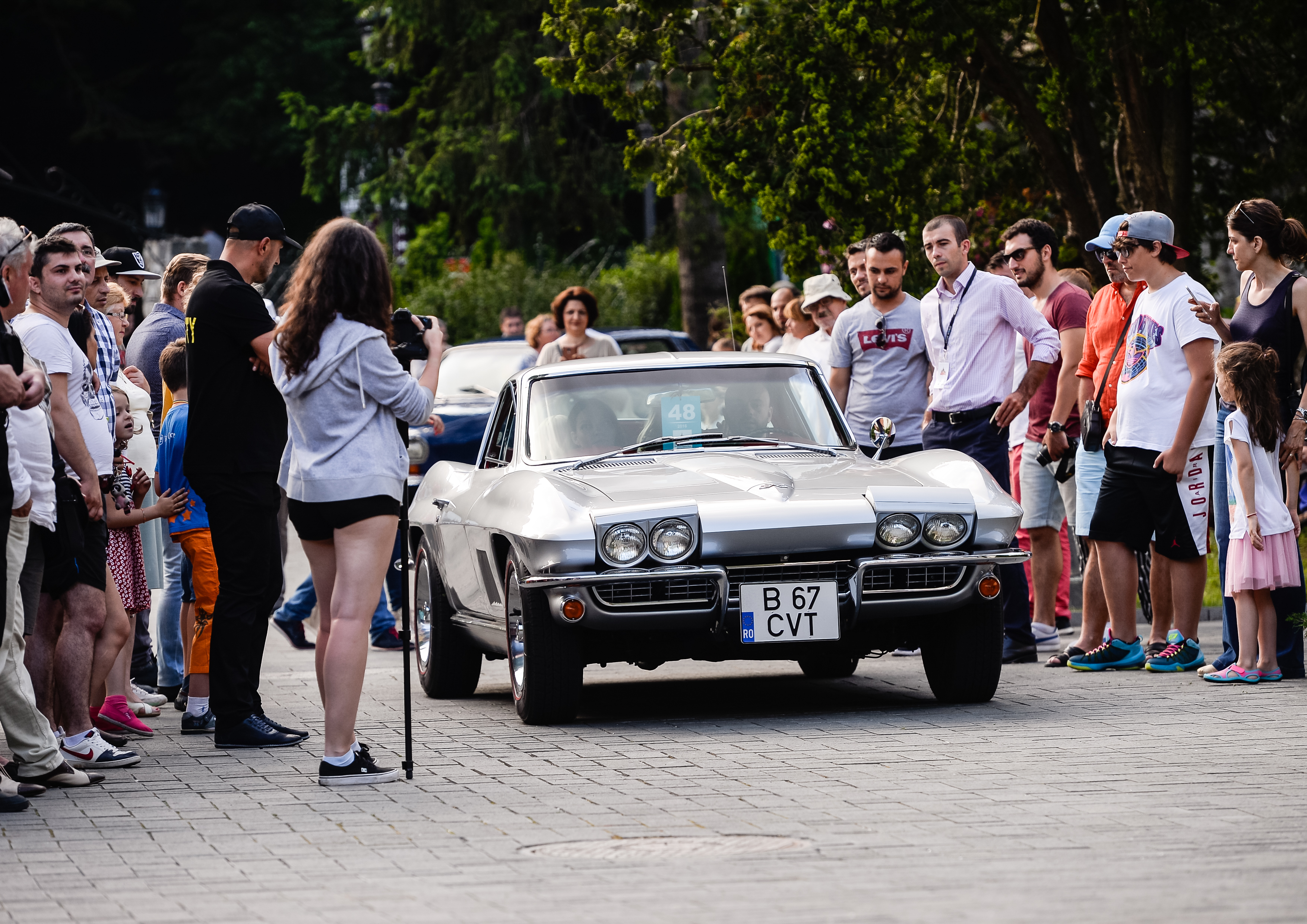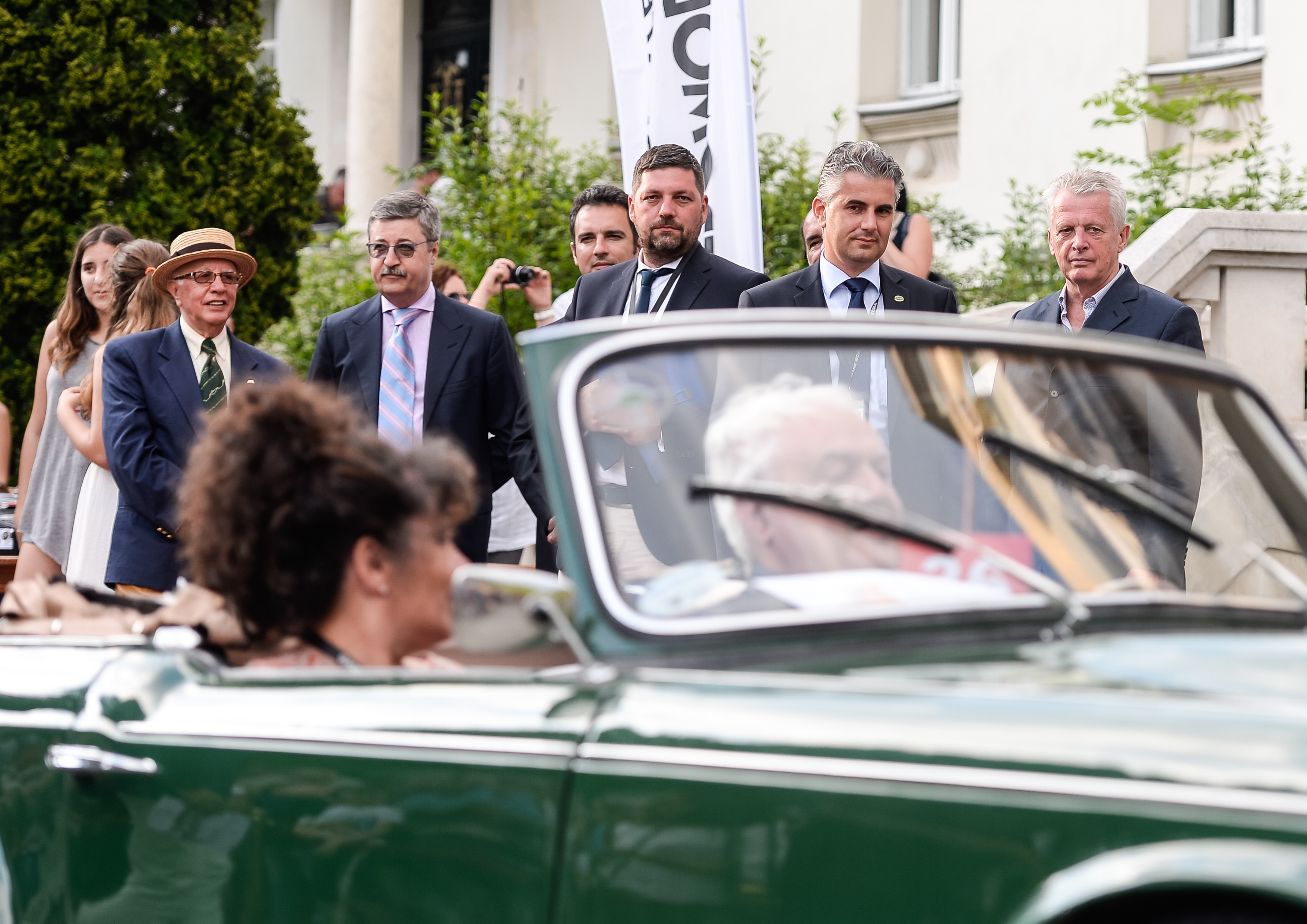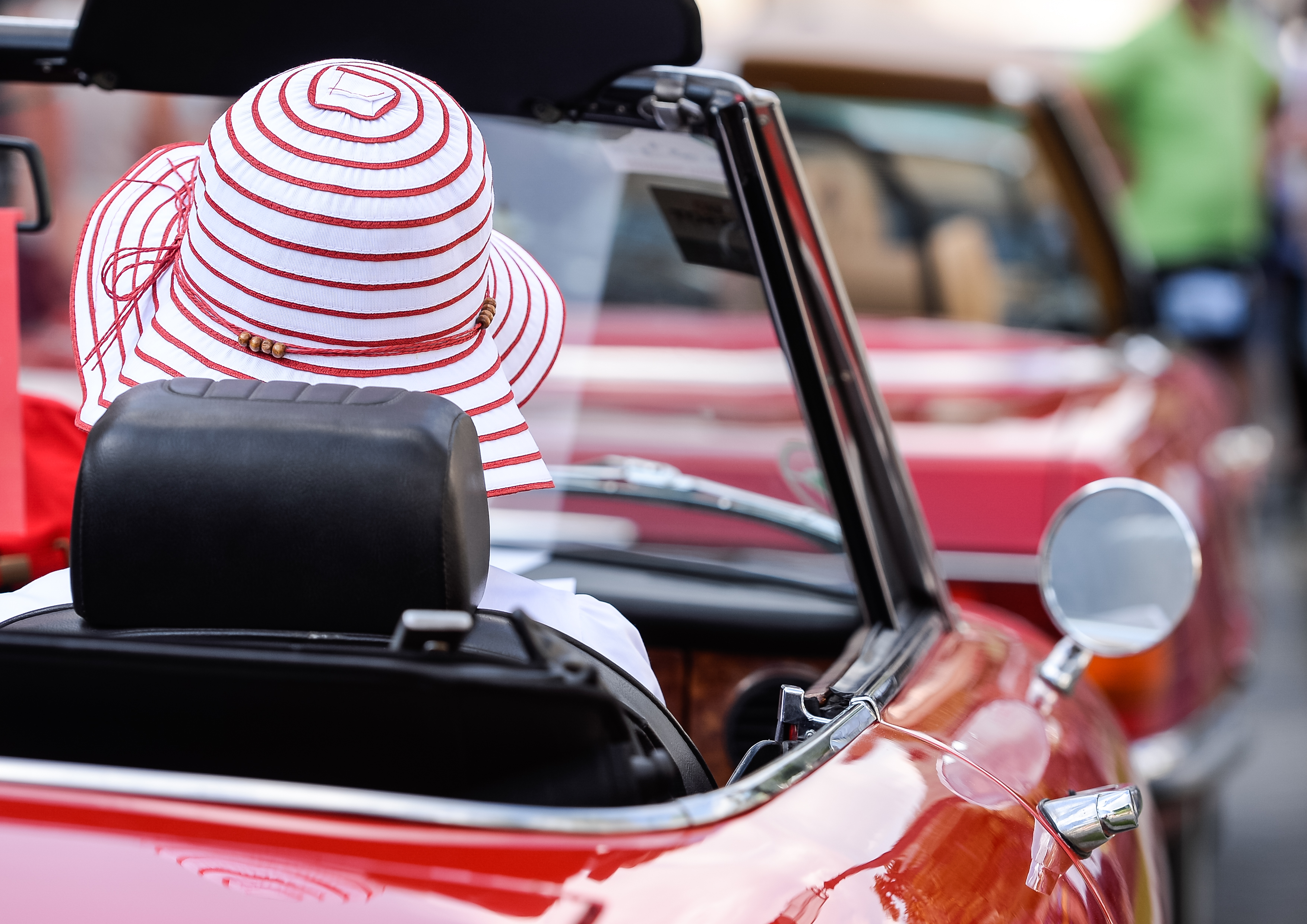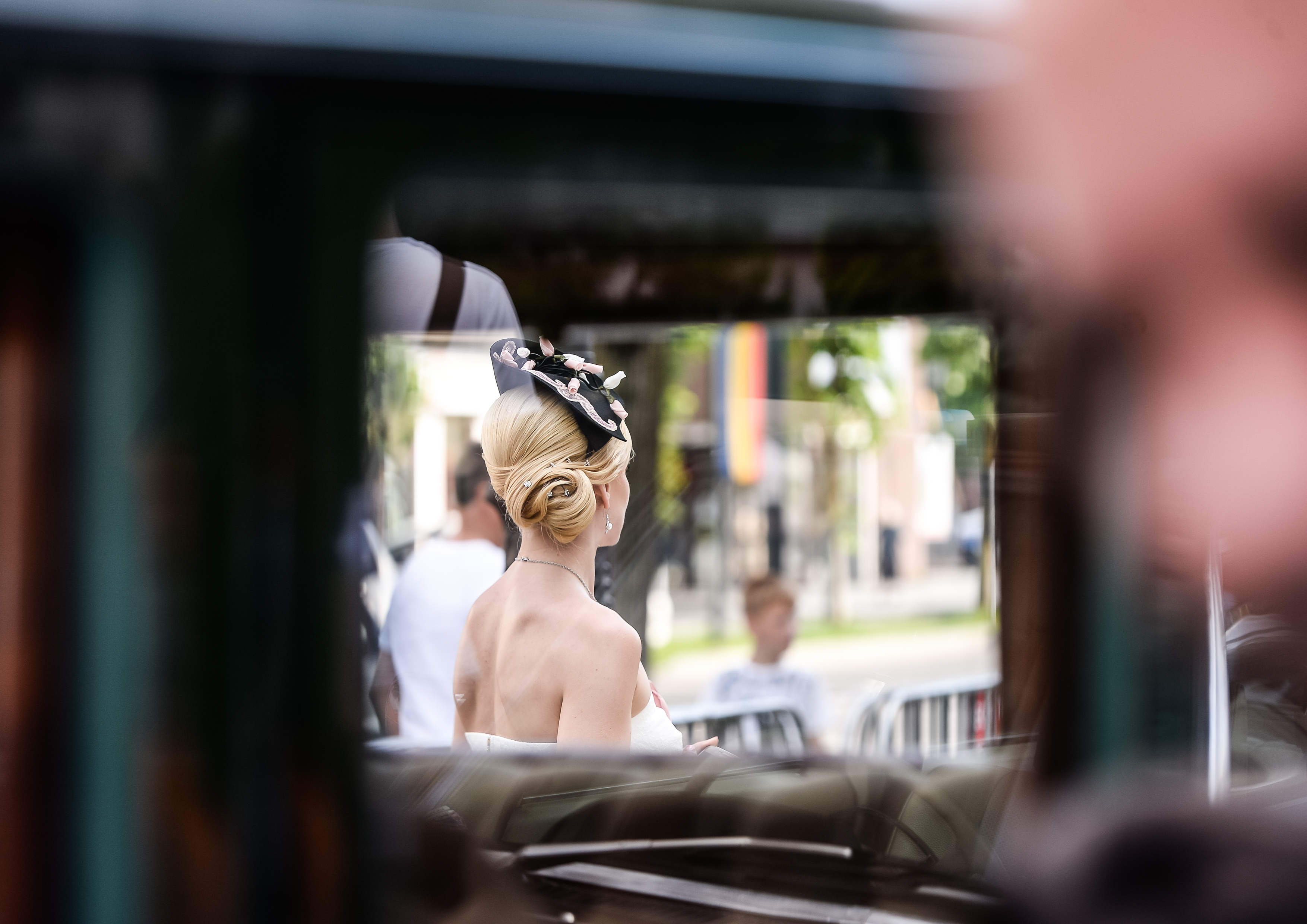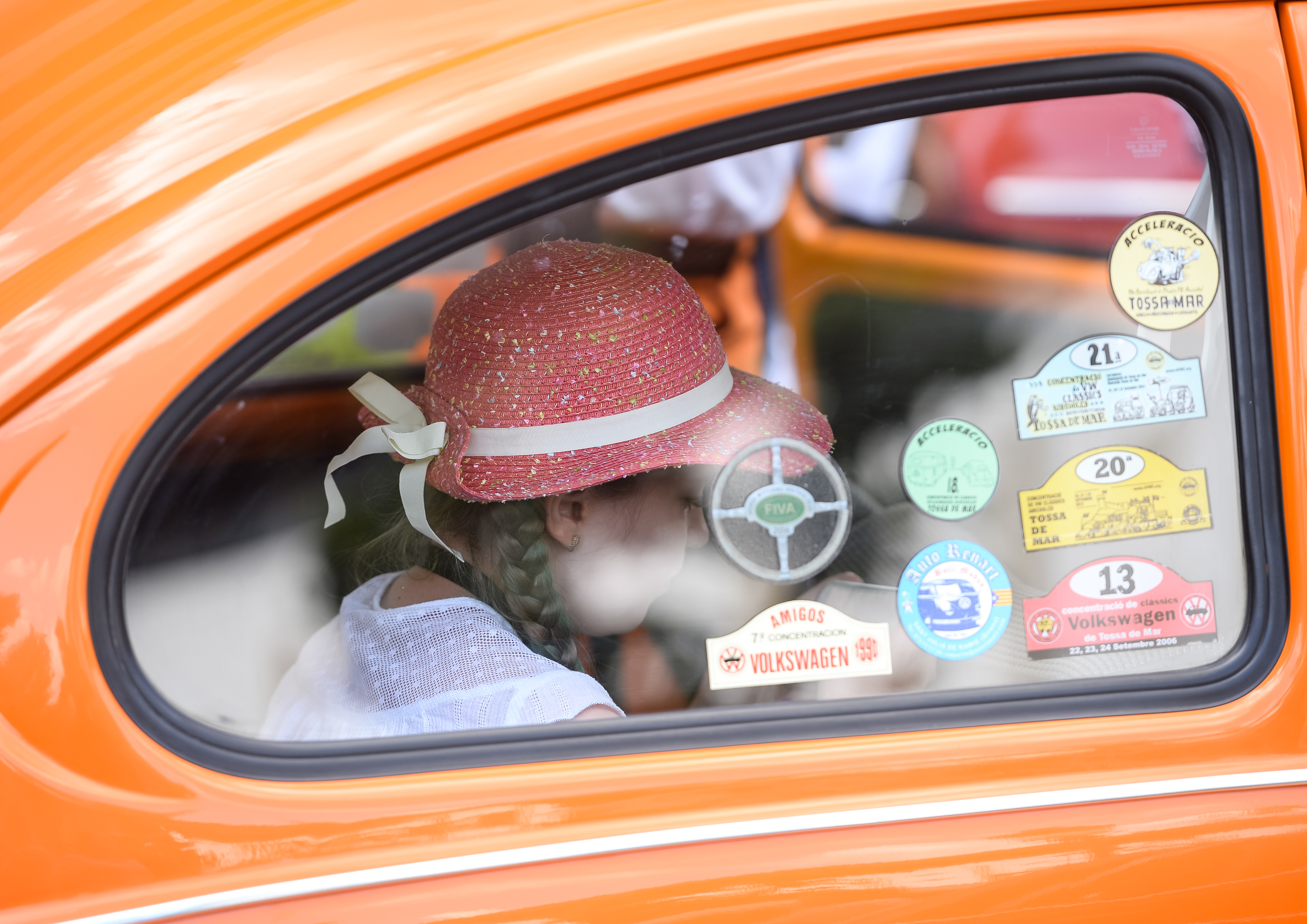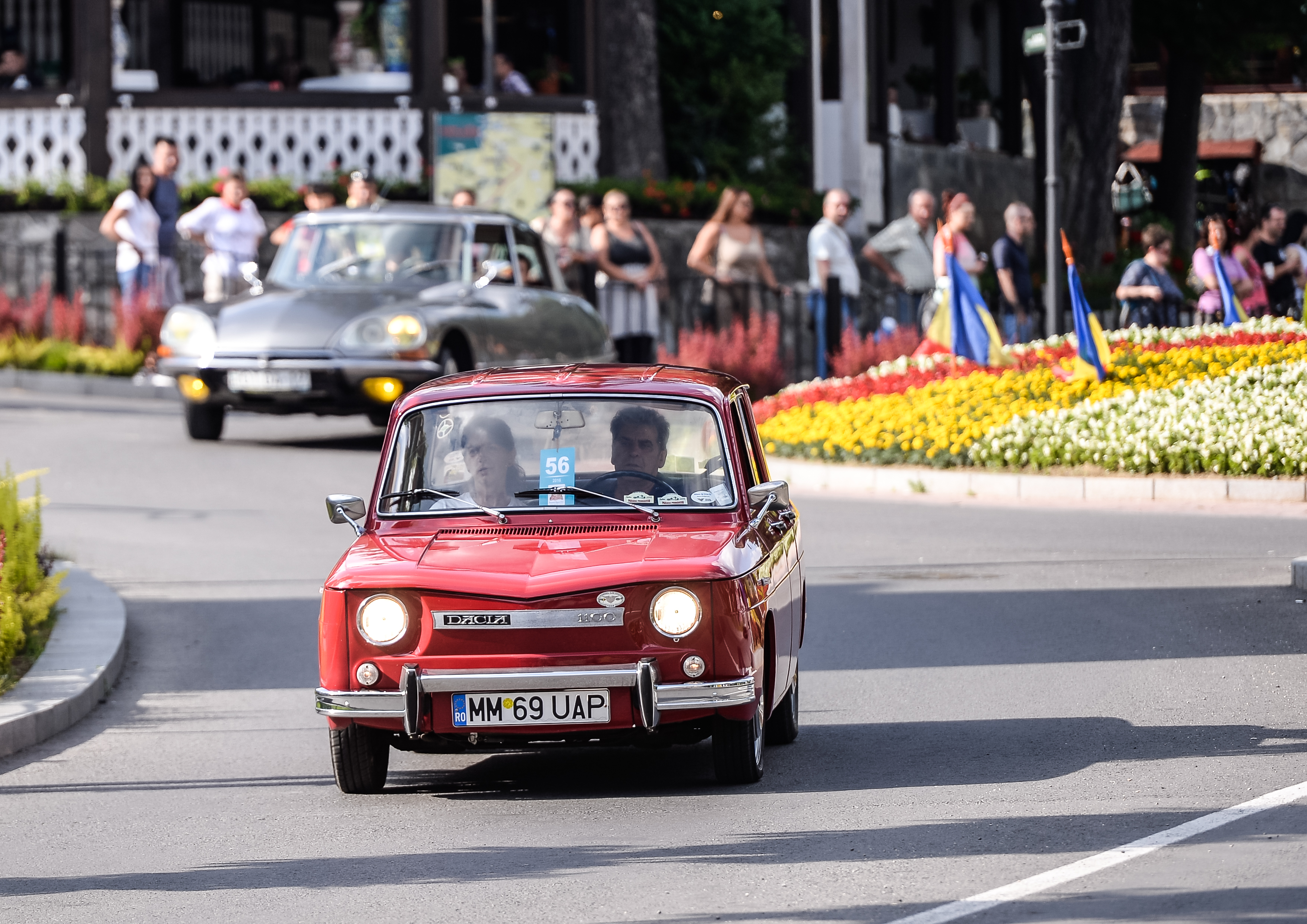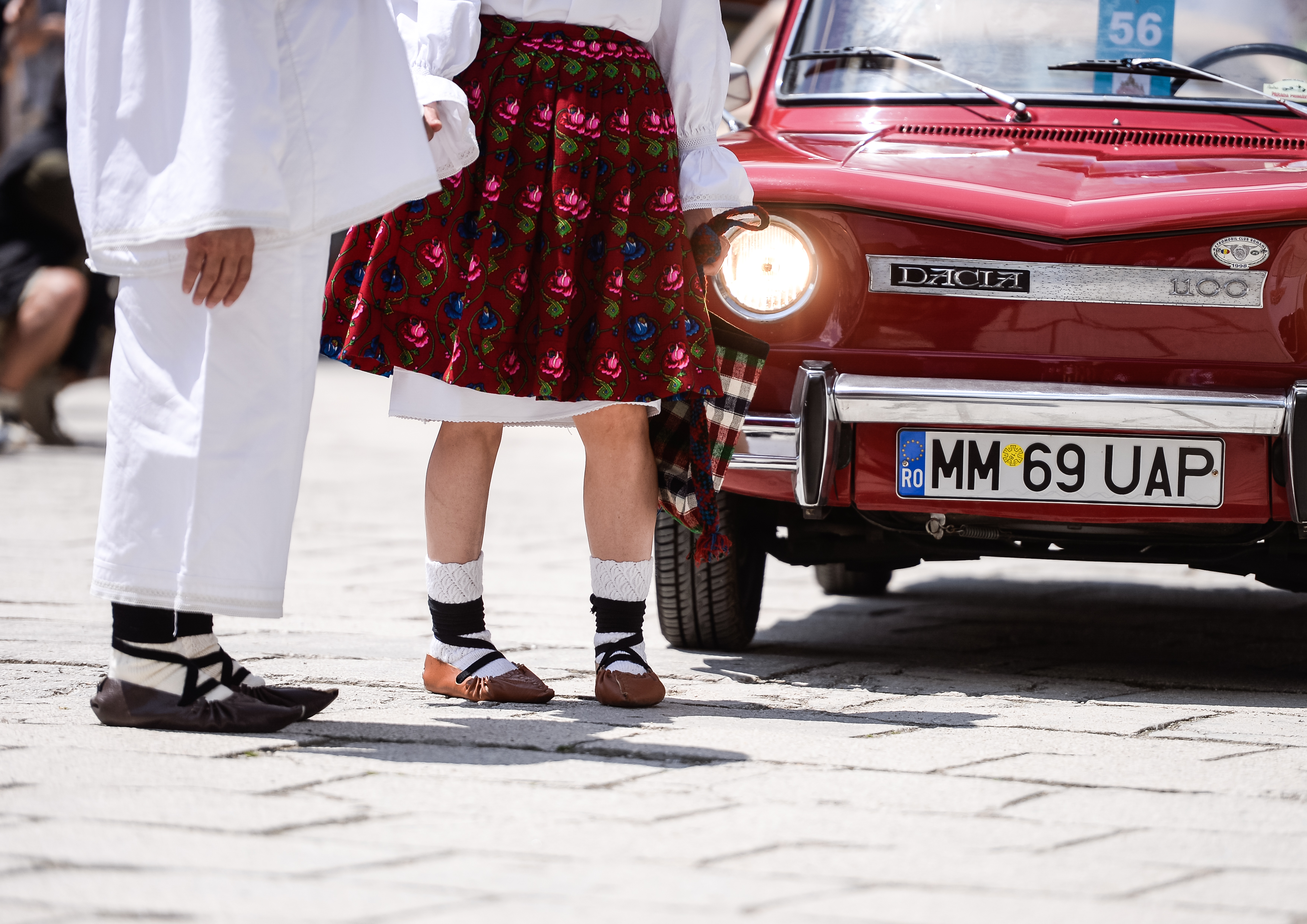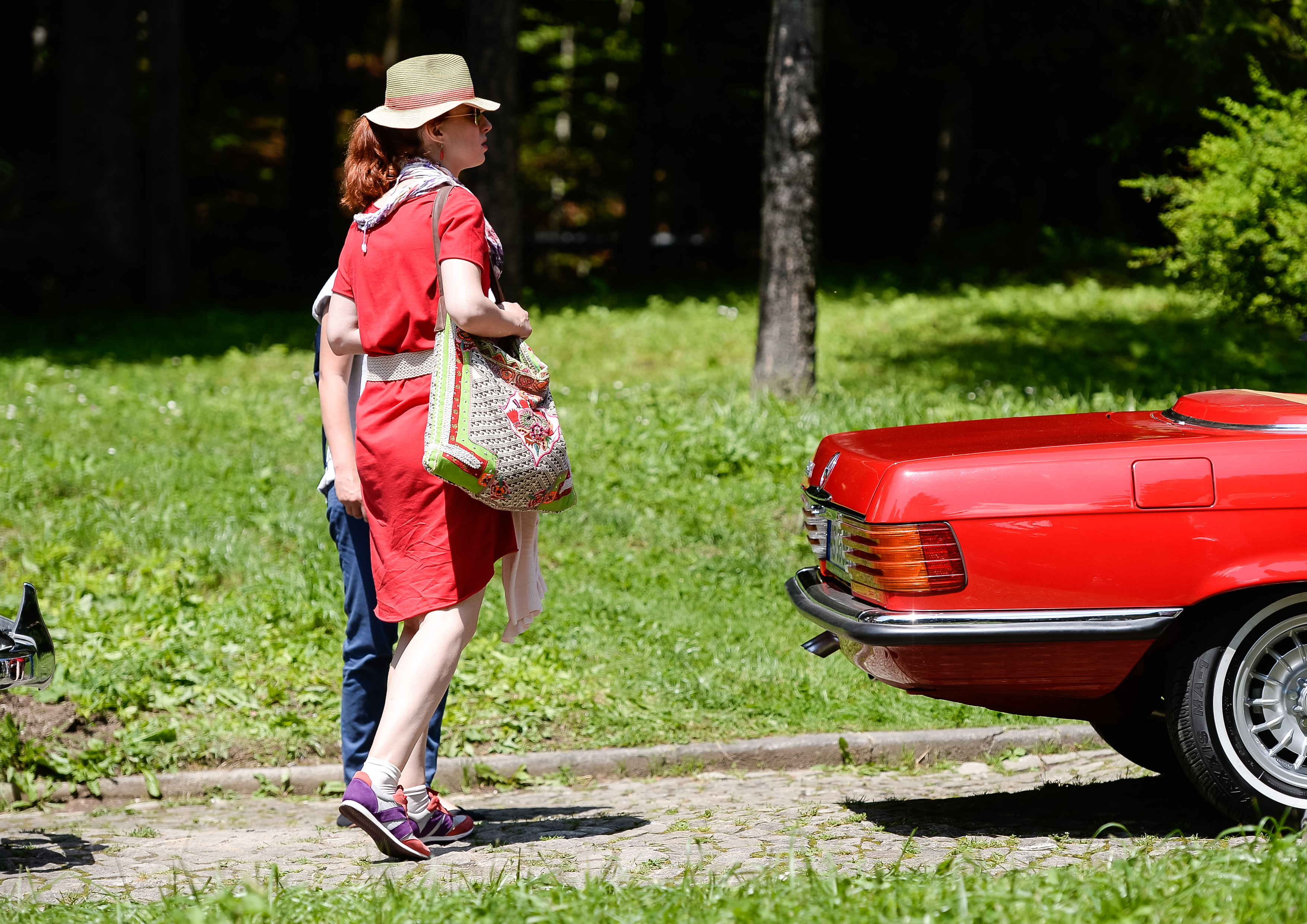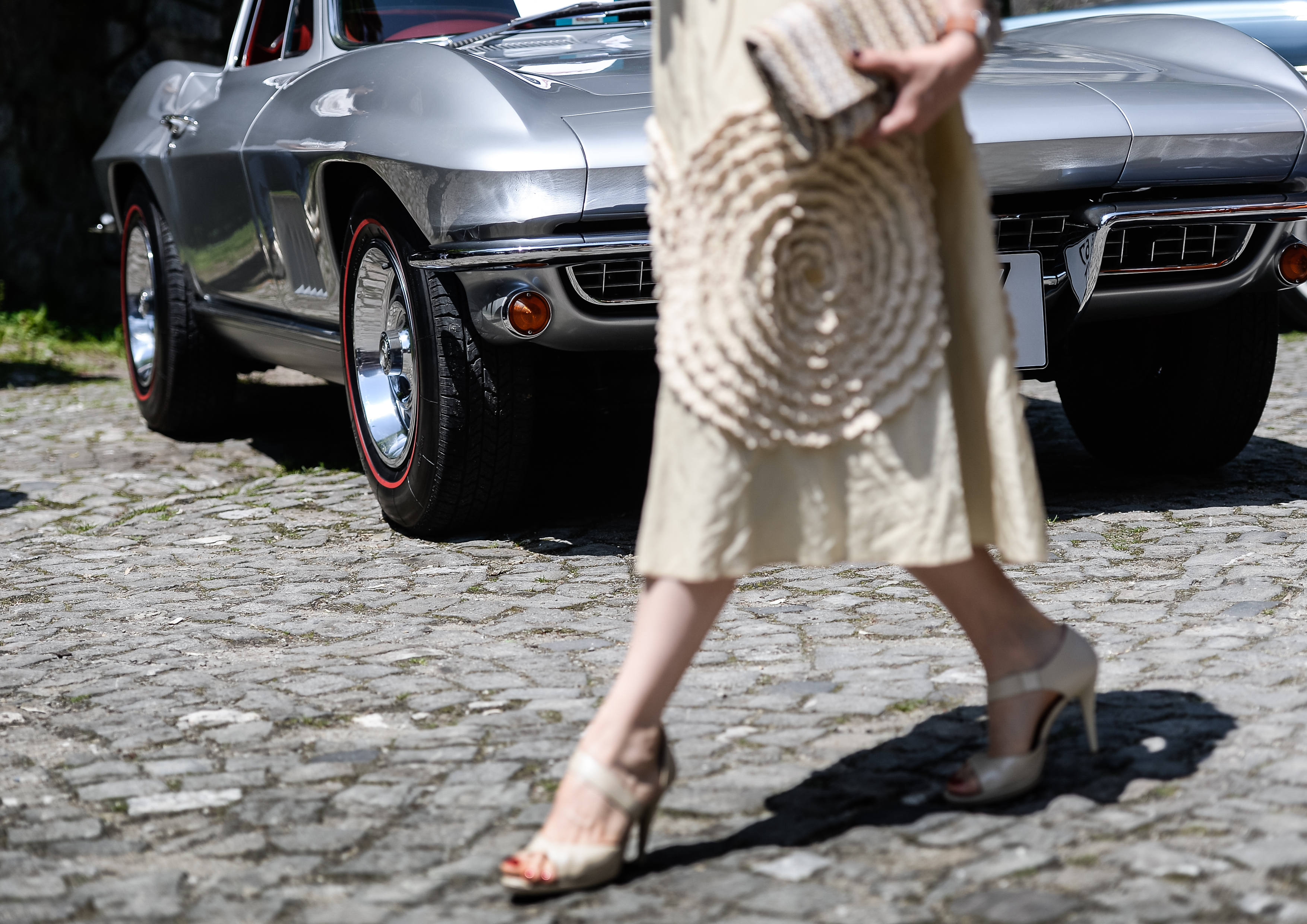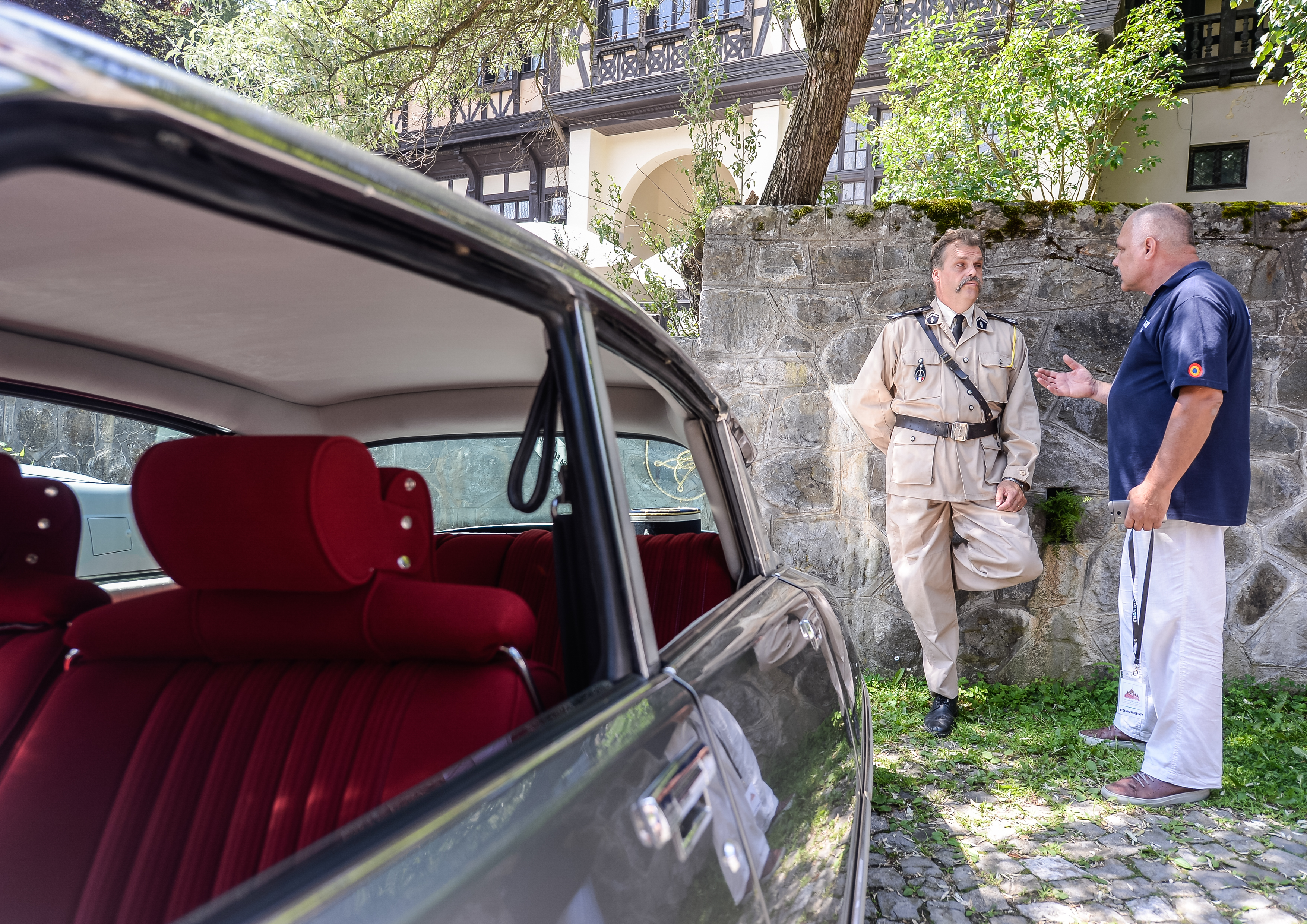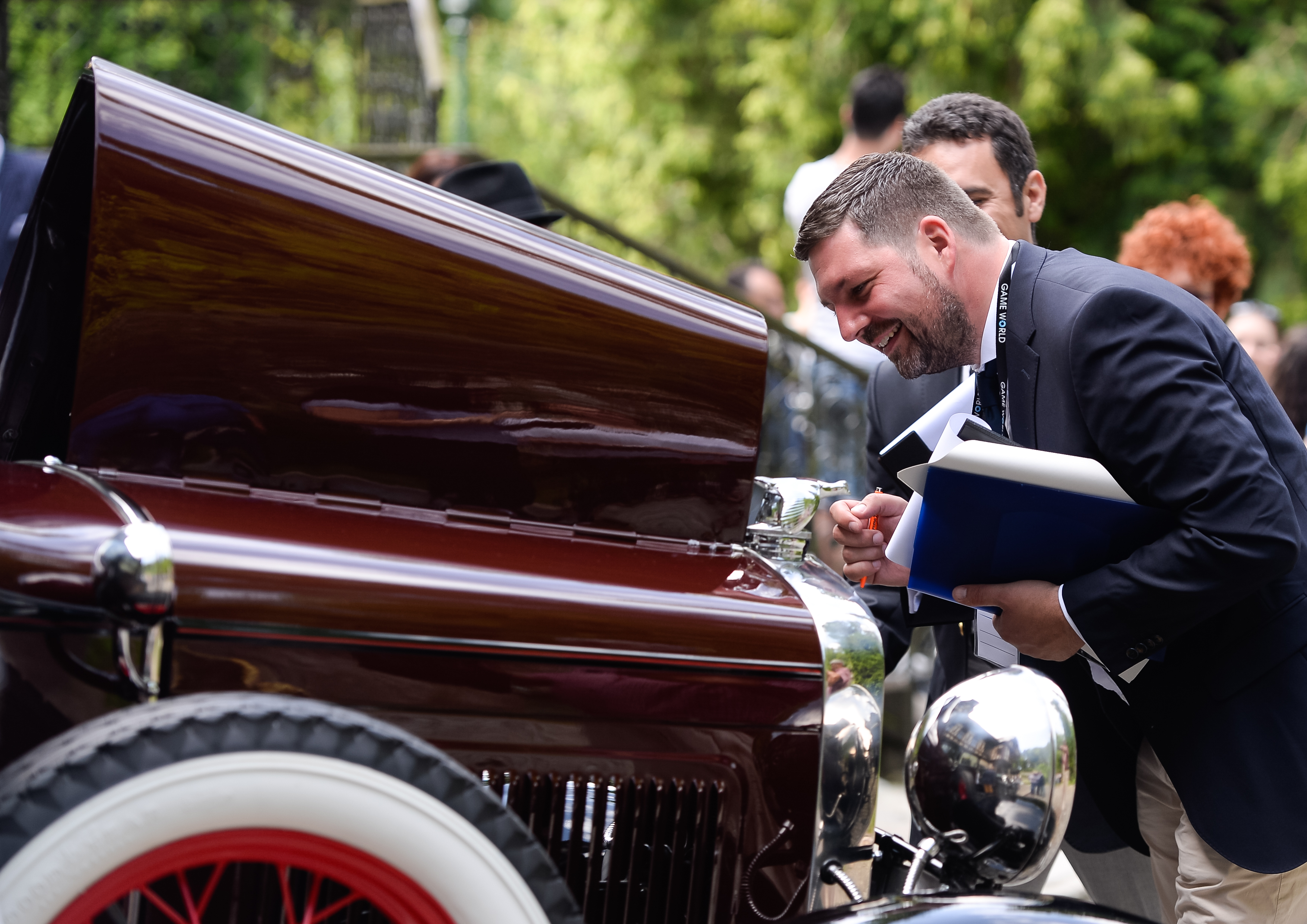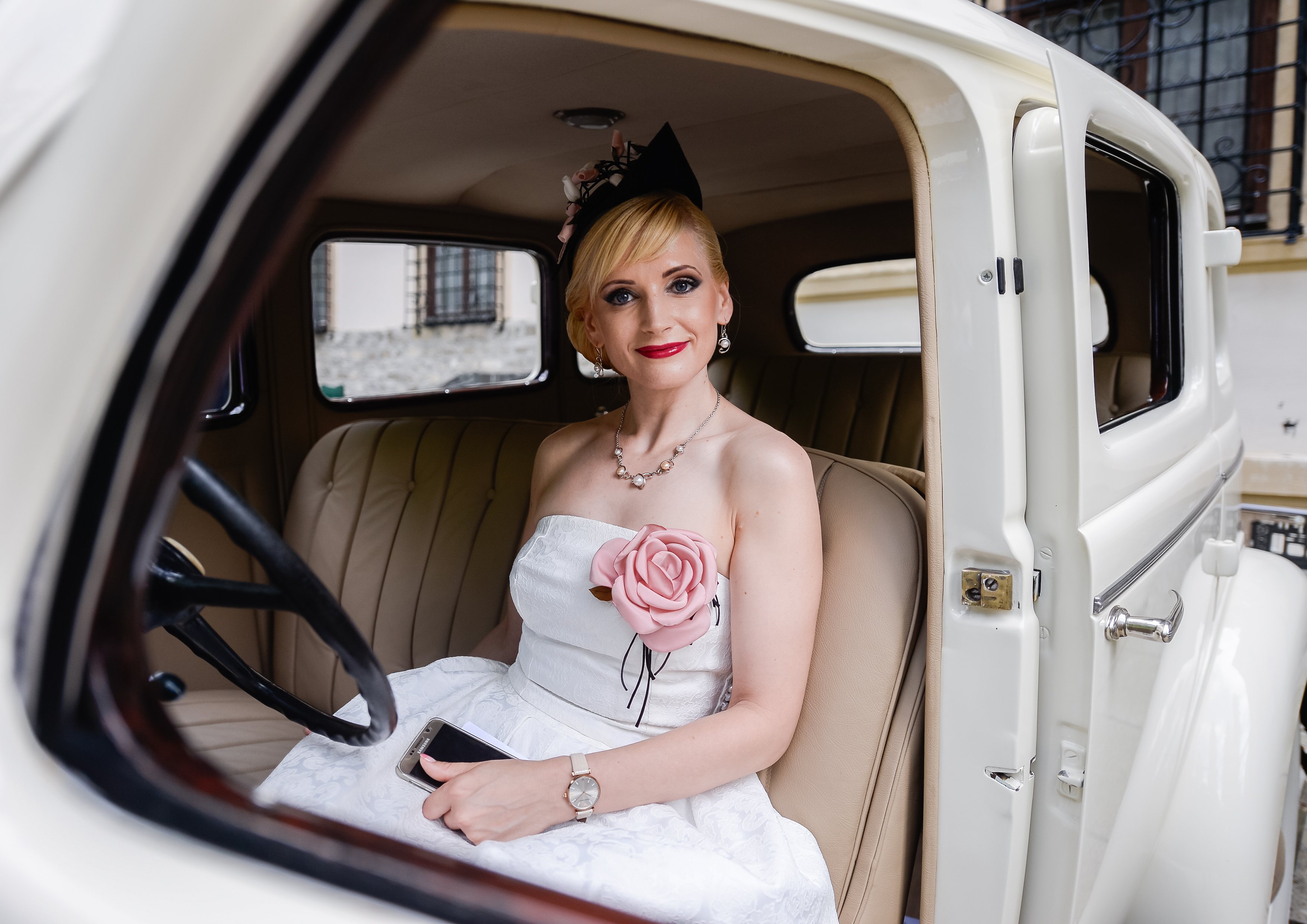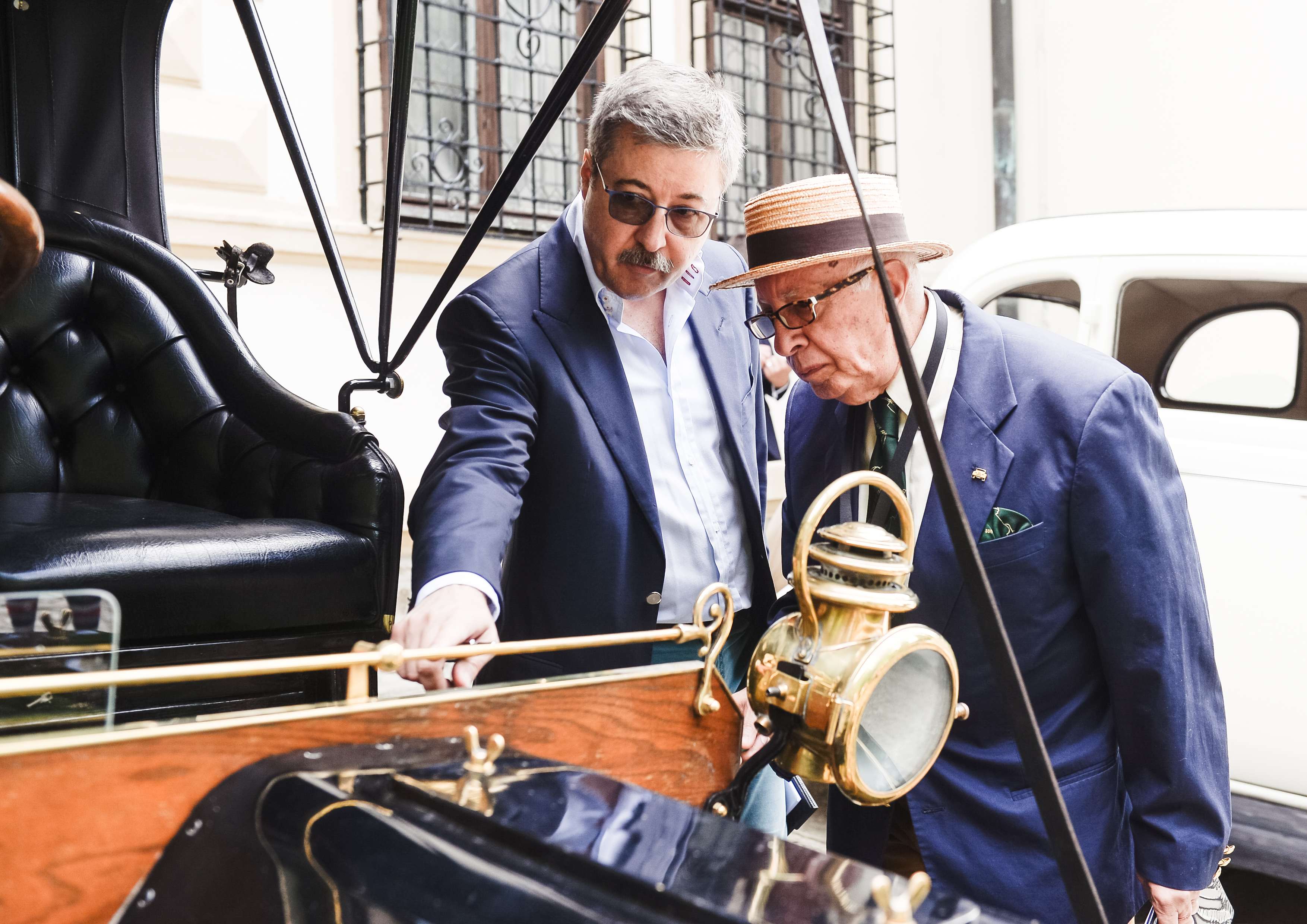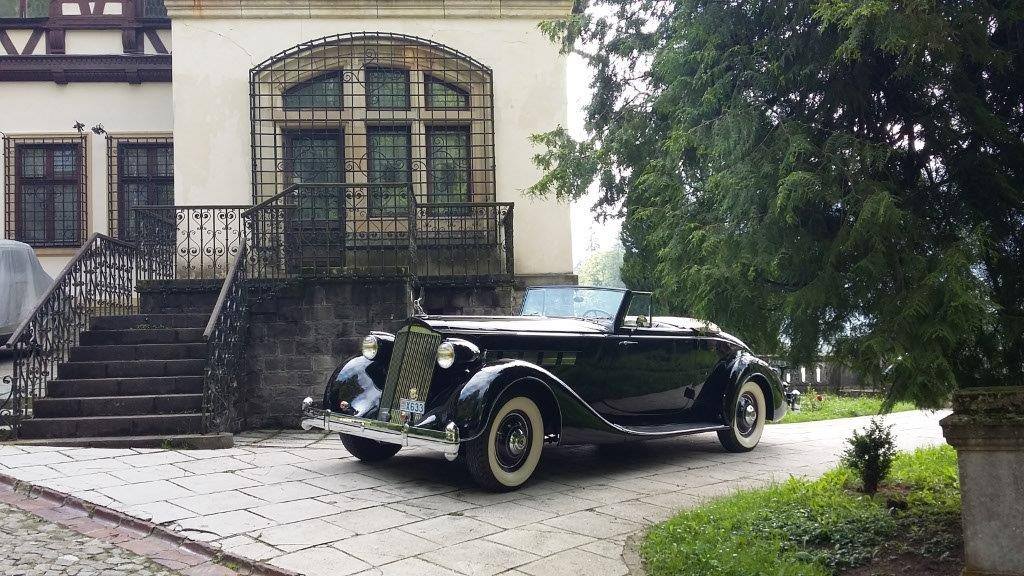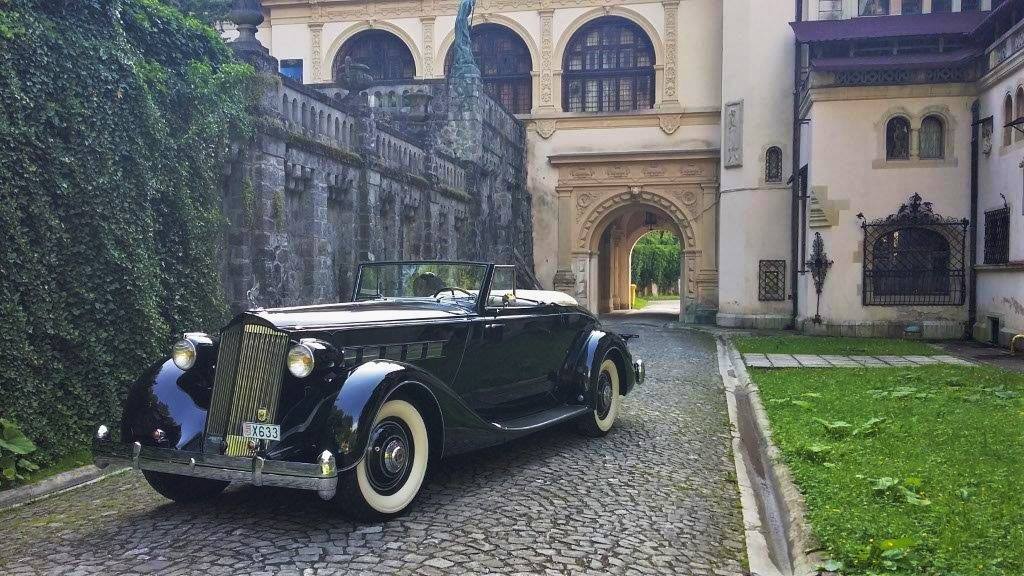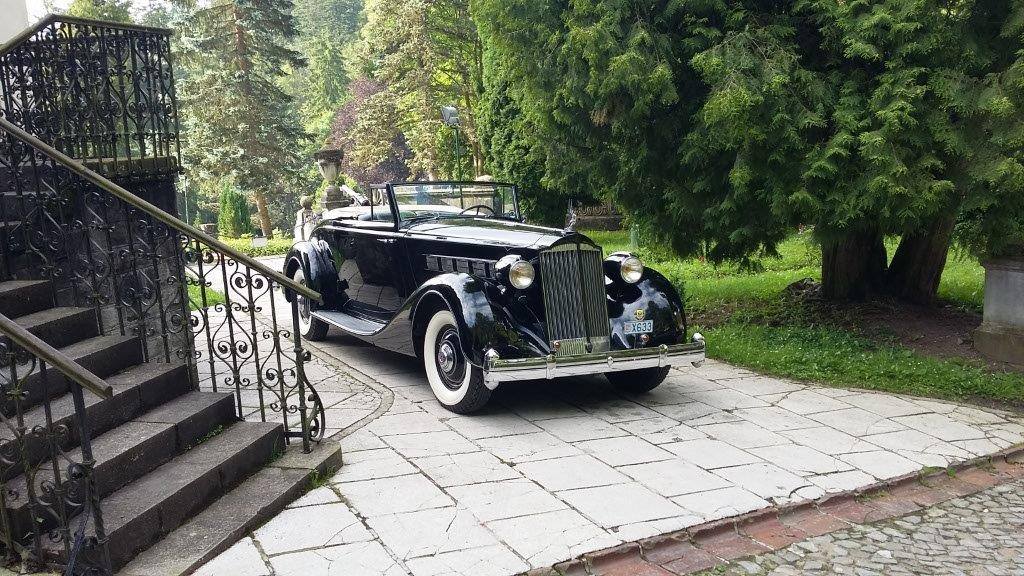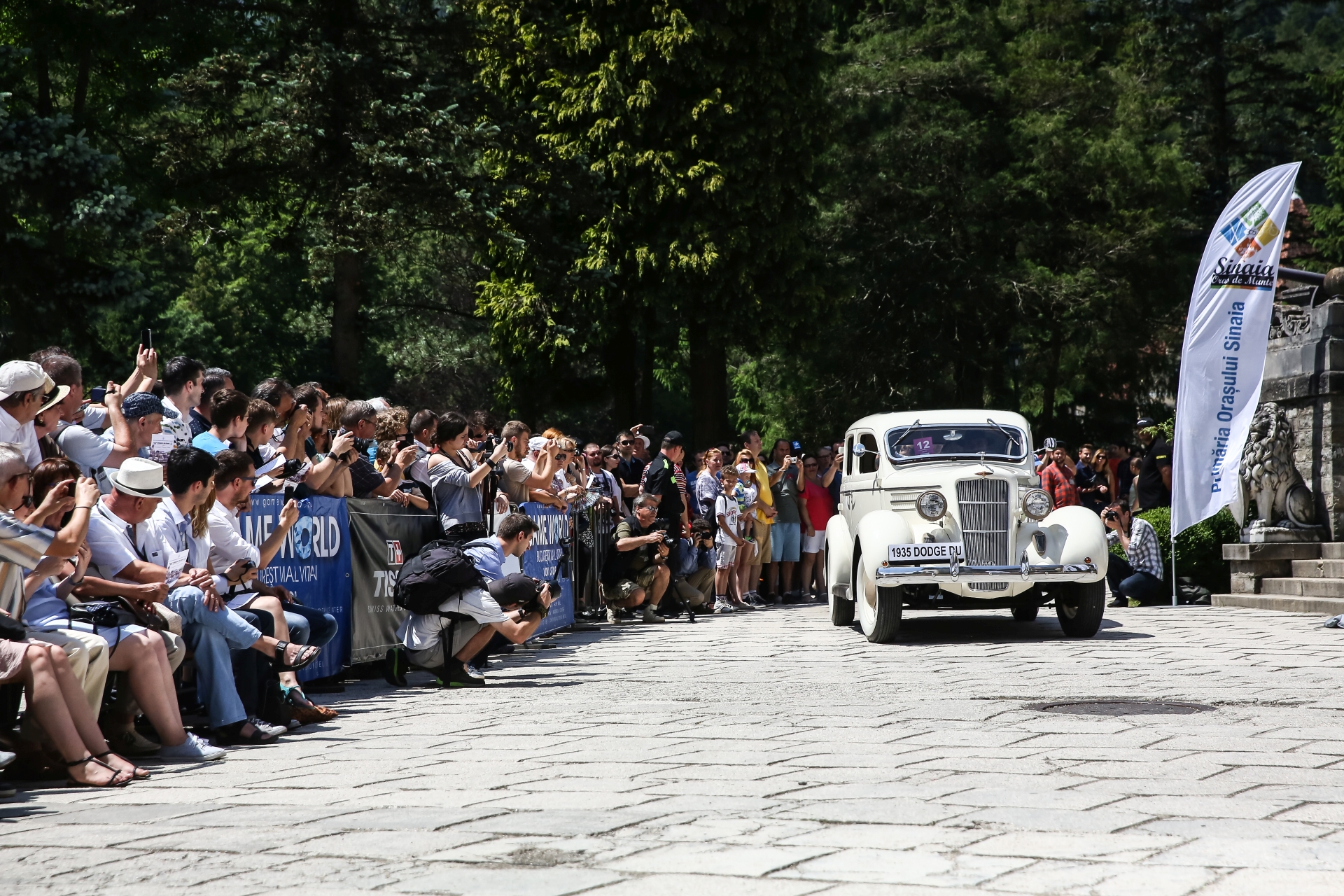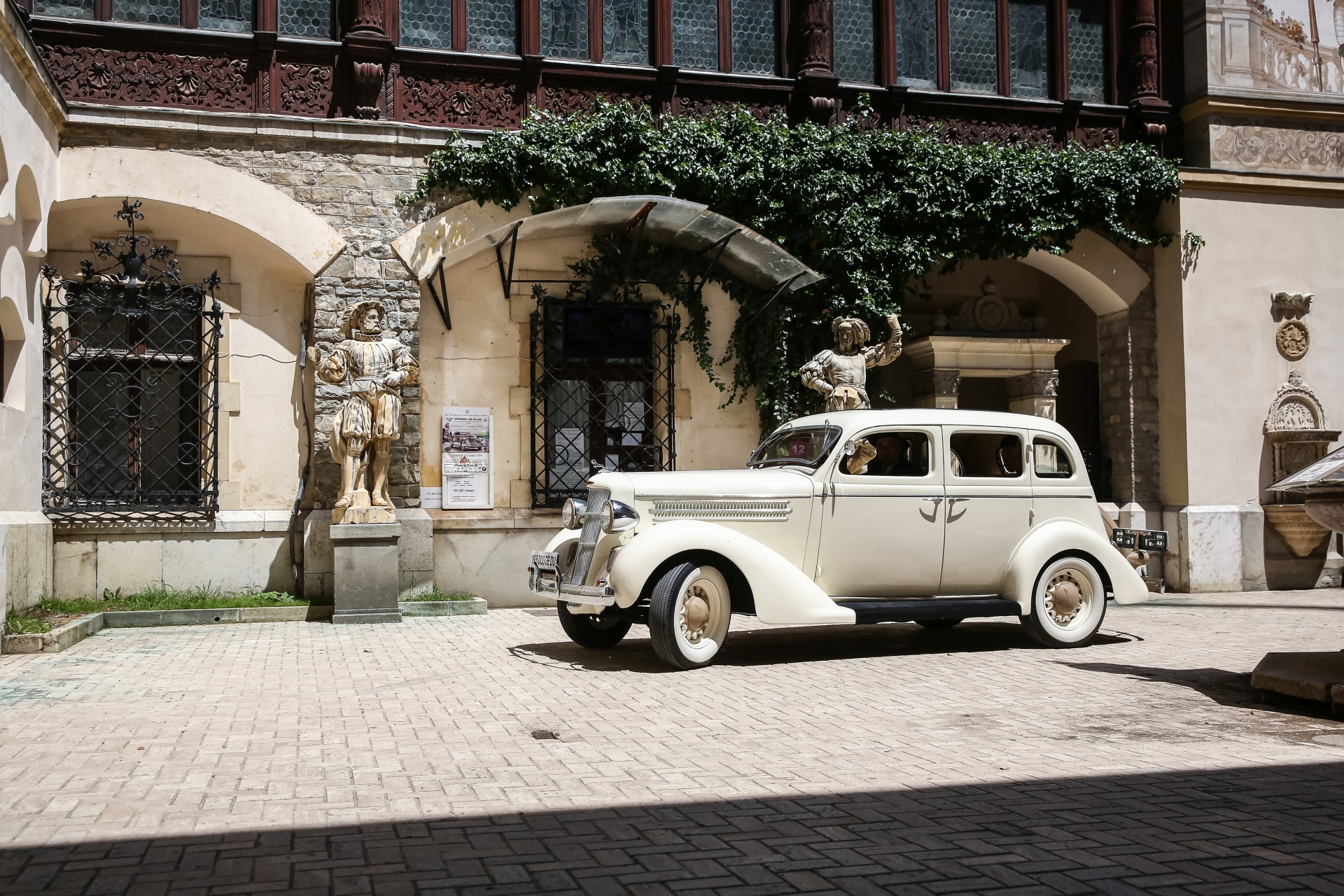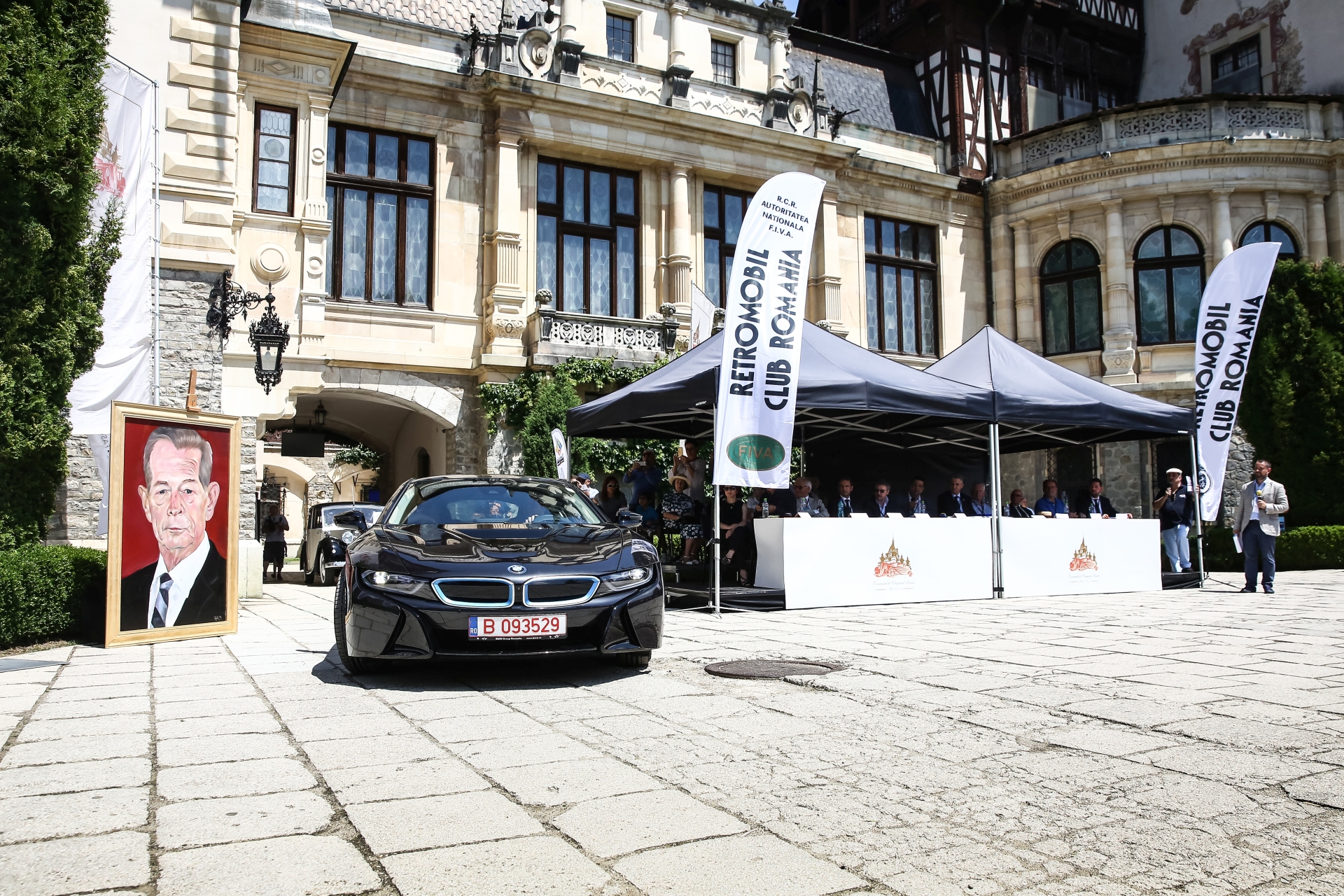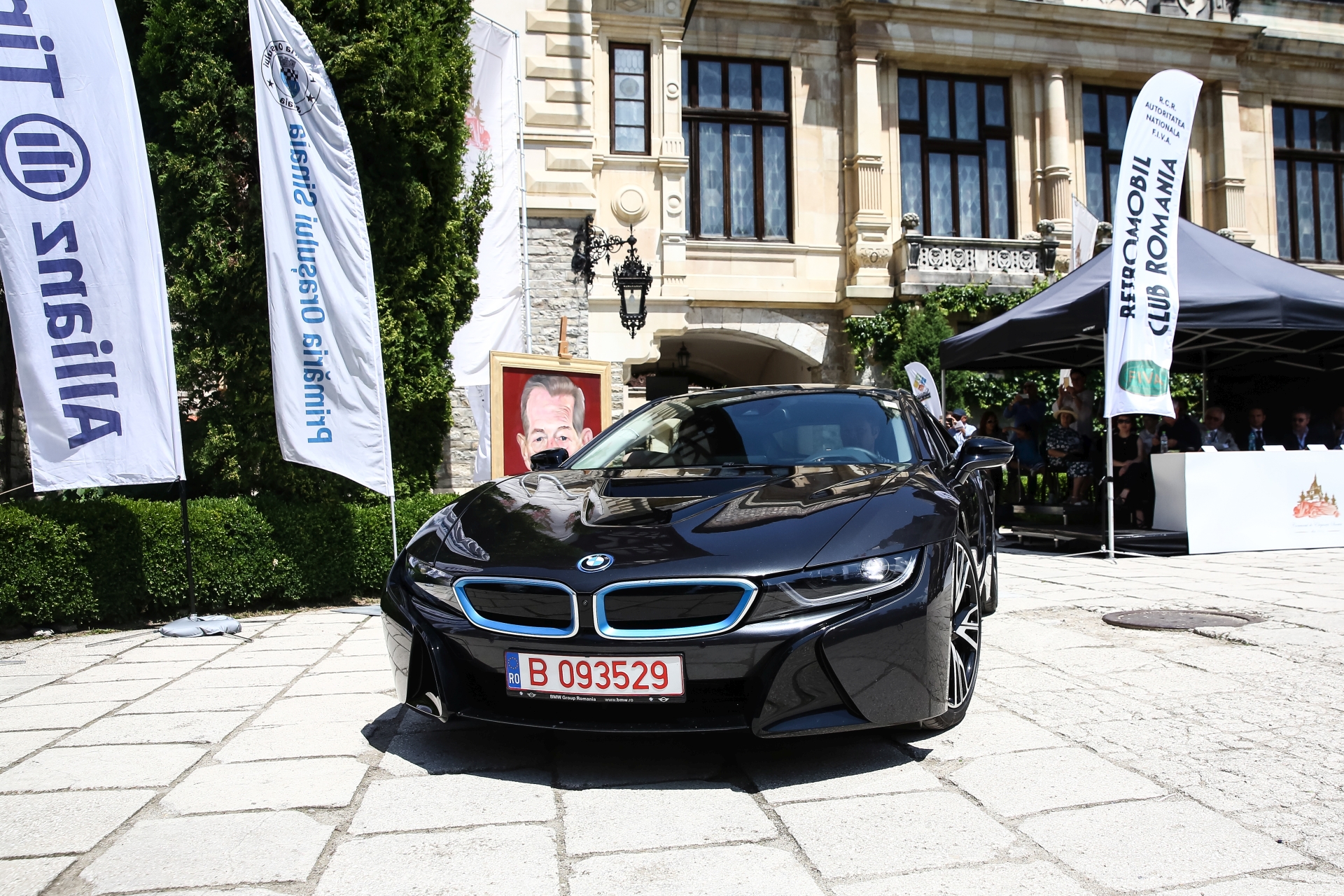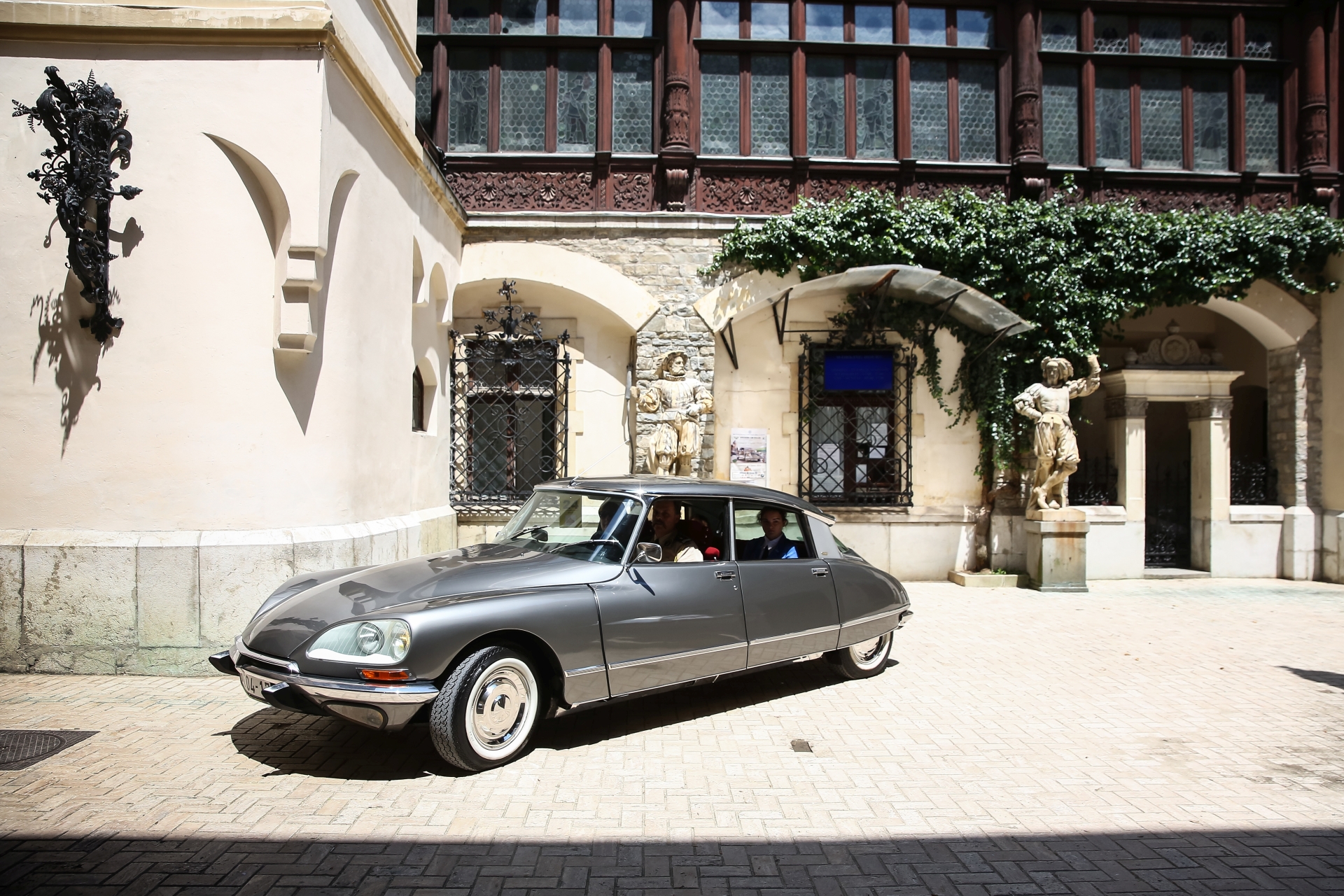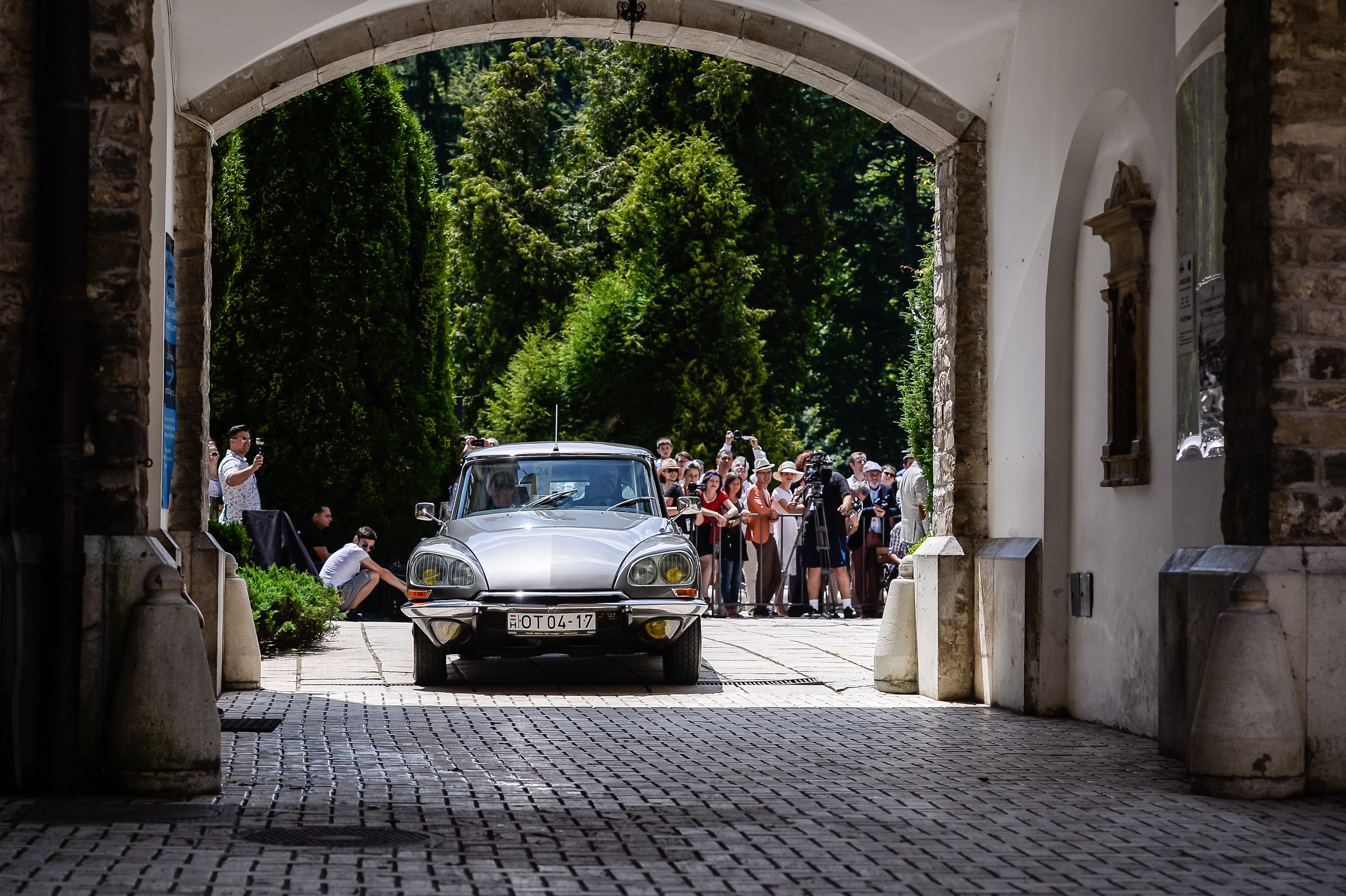While everyone was drooling over the show of force happening in Goodwood at the famous Festival of Speed held by Lord March every year, a more subtle, yet more exotic event was also taking place, not more than 120 miles away from what the guys from Top Gear called “The Best Road in the World”.
Back in 2010, when Clarkson, May and Hammond went out searching for the ultimate experience behind the wheel, whispers about a certain strip of asphalt also known as “Ceausescu’s highway” reached their ears. Knowing how eccentric the former dictator was, they headed to Romania, a country unknown to many, but blessed with great scenic routes and landscapes that petrolheads would enjoy. It was here they discovered what was later to be called “the best road in the world” also known to locals as the Transfagarasan.
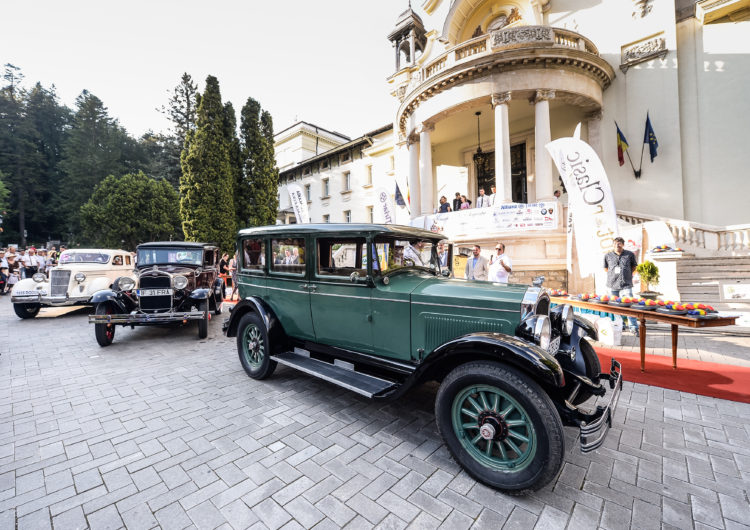
Every year, in the fairly recent vicinity of the famous road takes place the Sinaia Concours d’Elegance. Its eight edition was held last weekend, showing us what true grace means and exhibiting cars from almost all eras, ever since going around in chariots became obsolete.
Every year, in the last Saturday of June, the Romanian Royal Family in collaboration with Retromobil Club Romania and the BMW Group host this event, paying homage to some of the best designs and best cars ever to leave an assembly line. Held for the first time back in 1934, the Concours d’Elegance took a 75-year hiatus after the 1935 edition, returning in 2010 under the supervision of His Majesty, King Mihai I of Romania.
The Peles Castle, where the action happens yearly, is the perfect place for such an important and timeless display of class. Built at the end of the 19th century, it’s one of the more recent castles in Romania and Europe, put in place at the request of King Carol I of Romania, after he fell in love with the magnificent mountain scenery of the Carpathians.

The entire estate was built from the ground up under the strict supervision of Romania’s first King and in its making, a host of European workers and architects were used, from Romanians, to Albanians, Greeks, Germans, Hungarians, Turks and even French, each specialized in a certain field of work. In the end, the Peles Castle became the first one in the world that was fully powered by locally produced electricity coming from a purposely built power plant on the nearby grounds.
A grand palatial alpine villa combining different features of classic European styles, mostly following Italian elegance and German aesthetics along Renaissance lines, the Peles Castle is the perfect location to come and enjoy some of the world’s most elegant cars.
Reaching the venue after having woken up at 6 AM wasn’t an easy task to do. That’s because the road leading up to the castle is closed to cars, therefore visitors have to walk up a rather steep incline to reach the grounds, on cobble streets that aren’t particularly friendly to your feet. However, the deep musky forest and the clean mountain air made me realize that no matter how tired I was, my decision to attend this venue was a good one, and I had the feeling a great experience was coming my way.
As I got closer and closer to the exposition, the crowd was getting thicker, with murmurs about the cars that I was about to see spurring up my curiosity. No less than 29 classic cars from four countries were waiting for me, most of them spread throughout the Castle’s grounds offering visitors the chance to admire both the automobiles and the impressive architecture of the building.
Unlike other venues of this type, at the Sinaia Concours d’Elegance not only the cars are competing, but the owners as well, in a way. That’s because every car comes with a story and every owner seemingly dresses up for the occasion, most of them in styles matching the eras when the cars were in production.
For example, I just couldn’t take my eyes off a 1935 Dodge Du that was simply immaculate. Restored completely before arriving in Sinaia, the car was driven there by its owner with his lovely wife next to him. Both were dressed accordingly and while the gentleman was wearing a striped Italian cut suit that made us wonder if he’s a time traveling gangster, friends with the likes of Al Capone, his wife was dressed in a matching dress with a fascinating hat adorned with flowers.

To get a better idea of how good the trio looked together, you need to know that next to this Dodge the oldest car in the competition, a 1907 REO Runabout was parked and received considerably less attention. What you may not know about this particular model is that it came with four pedals while the acceleration was done using a lever on the side of the car, leaving me wonder just how the hell you’re supposed to drive it.
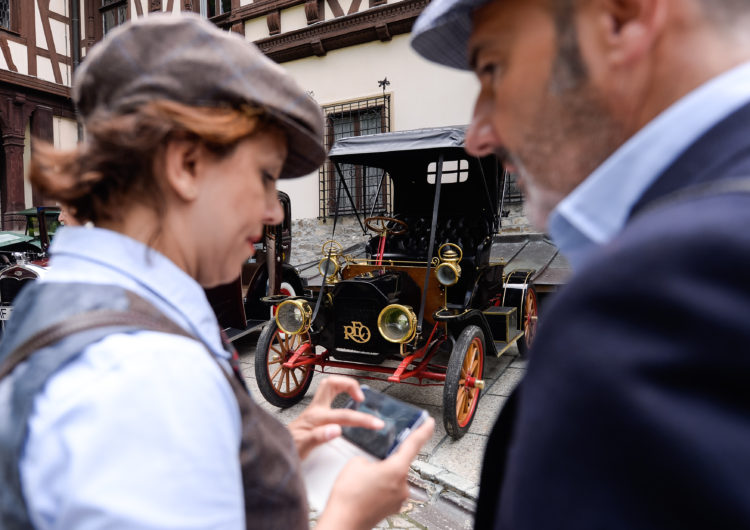
Another car that left a lasting impression was a 1970 Citroen DS 21 Pallas, owned by family that traveled over 700 km aboard it to get to this venue. The father was dressed as a French Army officer, in a suit that was historically accurate. Posing alongside his wife – who was also wearing clothes you’d find on the Cote d’Azur in the 70s – was their lovely daughter, dressed in a cadet’s uniform.
As for the car, it was probably one of the best maintained DS models in the world. The Pallas nomenclature was attributed to luxury models, the top of the range versions if you will. Developing this car took no less than 18 years and over 1.45 million cars were sold during its production run.
Its iconic feature is, however, the hydropneumatic suspension that includes an automatic self-leveling system that allowed the car to change its ground clearance. The DS was fitted with power steering and a semi-automatic gearbox while the adaptive headlights were way ahead of their time.
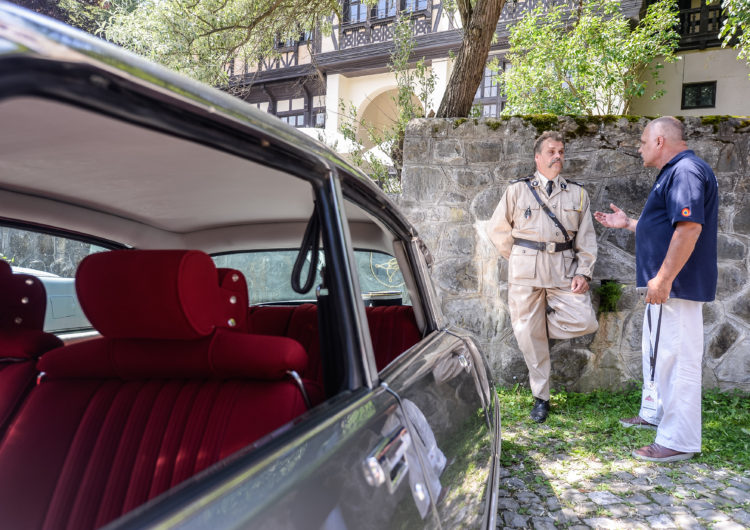
And since BMW was one of the partners of this exquisite event, a vintage model from Bavaria had to be present. This year, the blue and white badge was represented by a BMW Glas 1600 GT from 1968. Even though the 1600 GT is not an extremely well-known model, it was a rather important one, being developed in collaboration with Hans Glas. To be fair, it was more of a takeover than a collaboration, BMW buying the Bavarian company and its factory in Dingolfing and building cars with the same design as the Glas models of the age, only with a new drivetrain installed, different badging and kidney grilles up front.
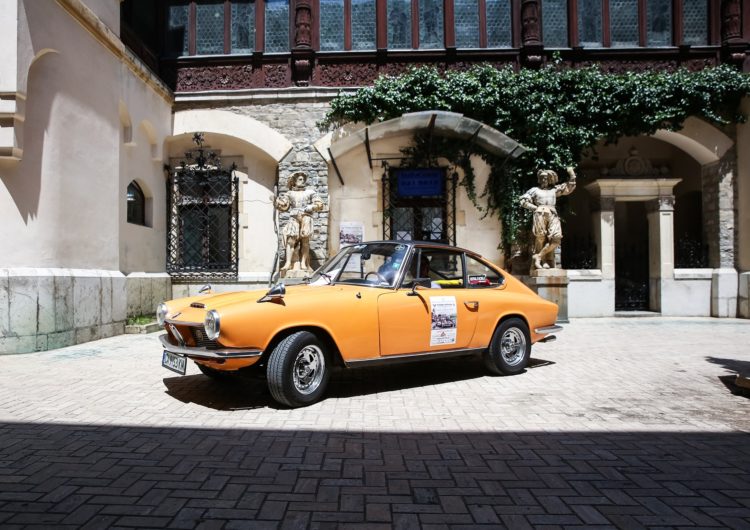
The winner of this year’s Concours d’Elegance however wasn’t either the Dodge, the REO or the DS though, instead the jury deciding that a 1936 Packard Super Eight was worthy of this title.
The most successful luxury car maker of the first half of the 19th century in the US, Packard was the first company to introduce a 12-cylinder engine in the North American country. That wasn’t the only innovation the company brought to the table, things that are being considered on the edge of technology today being employed back then as well.

For instance, the massive raked grille up front was active, meaning it used to open or close depending on how much air was needed to cool the engine, working using a simple thermostat. That’s a feature that was just introduced on the G11 7 Series for aerodynamic purposes but with a roughly similar concept behind it.
From its beginning, through and beyond the 1930s, Packard-built vehicles were perceived as highly competitive among high-priced luxury American automobiles. The company was commonly referred to as being one of the “Three P’s” of American motordom royalty, along with Pierce-Arrow of Buffalo, New York and Peerless of Cleveland, Ohio.

Even though today few people still remember Packard and what it stood for – in 1931, 10 Packards were owned by Japan’s royal family and between 1924 and 1930, it was also the top-selling luxury brand – the jury found the Super Eight on display last weekend in Sinaia the best car in show.
However, the vibe is what draws these collectors to Sinaia every year, not the prizes involved, that are more or less symbolic. It’s the passion that’s borderline touchable and the scenery that contribute to getting a huge turnout on the grounds of the Peles Castle every June, and there’s simply no substitute for that. Chip in the fact that you’re tantalizingly close to the Transfarasan Highway and you soon realize that this venue should be on your bucket list.


